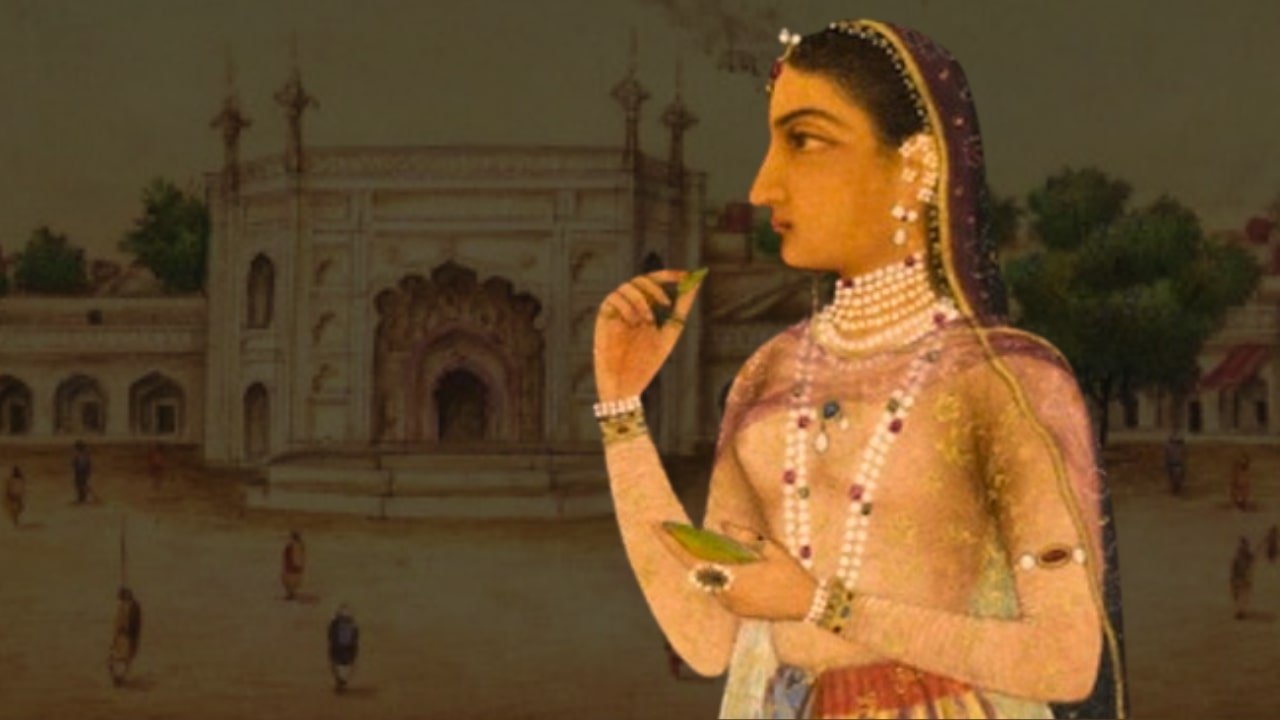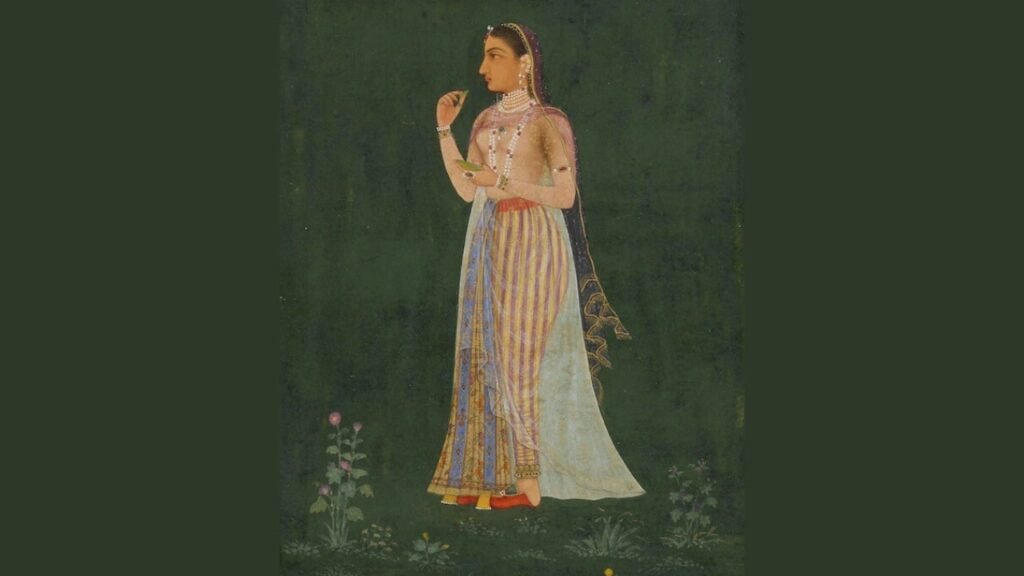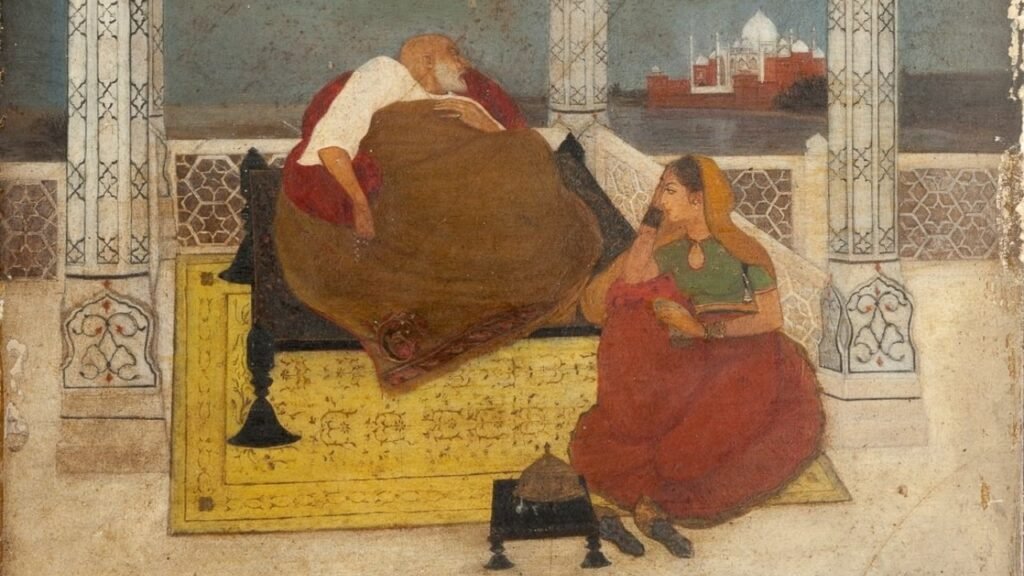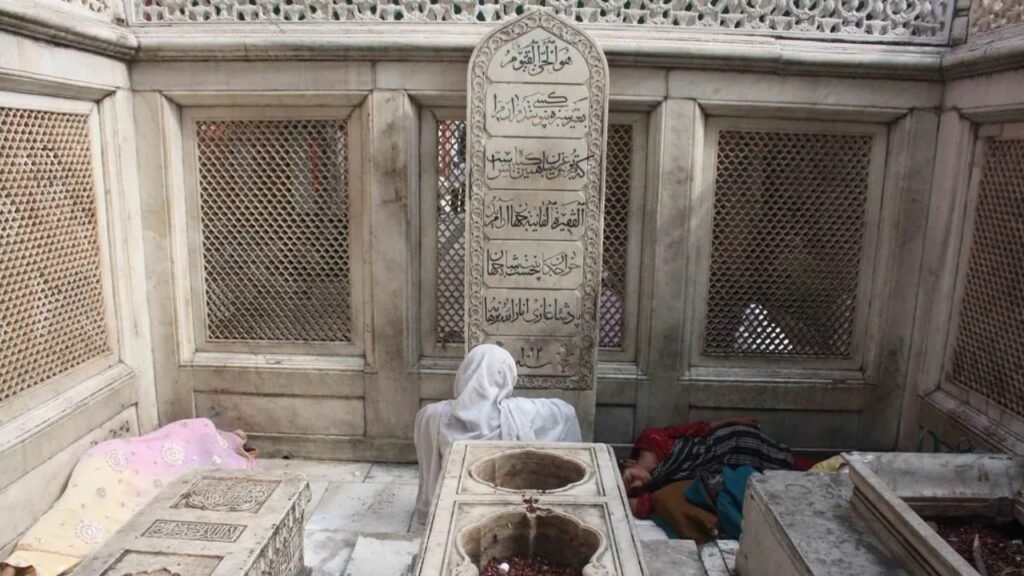
Table of Contents
Introduction
Jahanara Begum, the forgotten princess of the Mughal court—do you know her story?
Let us go back in time to our school days. When we were studying Mughal history, do you remember any mention of a princess? Many will likely say no.
We have all read about the emperors and princes but lost in history are the influential women at court who were powerful in their own right.
Through this article, we will explore the life and legacy of Princess Jahanara. A formidable leader, this princess left her mark on architecture and politics. Her story is one of trials, yet Princess Jahanara’s wisdom and resilience shone through and helped her overcome numerous challenges.
History remembers her father Shah Jahan and her brother Aurangzeb, but forgets her challenges and triumphs.
Come, let us travel back in time to meet her!
Princess Jahanara, Daughter of Shah Jahan

Born in Ajmer, Princess Jahanara was the eldest daughter of Mumtaz Mahal and Shah Jahan. Not only was she a person of considerable importance, but part of one of the most important royal lineages in Indian history.
The politics and ways of the court were not unknown to her. As the daughter of Shah Jahan, Princess Jahanara practically grew up in the Mughal court and was the apple of her father’s eye.
She was intelligent, received the finest education, and was well-versed in Persian literature and Sufi philosophy. But, life as she knew it changed in 1631.
After the untimely demise of her mother, Mumtaz Mahal, Jahanara had to shoulder immense responsibility. A young girl of 17 years of age, she was made the First Lady of the Mughal Empire and given the title of Padshah Begum. The honour was traditionally reserved for the emperor’s chief consort.
Shah Jahan had other wives, but his daughter Jahanara turned out to be his closest confidante and supporter. The young shoulders had certainly taken on a great deal of responsibility.
Naturally, then, she was involved in courtly matters and held significant power in the Mughal court. Princess Jahanara advised her father on matters of politics and issues relating to the management of the royal household.
Gradually, her active involvement in state affairs and court decisions elevated her position as the most powerful woman in the empire. The young princess had come a long way!
Jahanara’s Political Role and Influence
Princess Jahanara had the authority to issue royal decrees or farmans as her father entrusted her with the royal seal. She also managed trade relations, played an important role in foreign diplomacy, particularly with European traders, and steered the Mughal Empire’s commercial interests.
Over and above the familial matters, Jahanara’s influence grew and firmly established her as a key figure in the political landscape of the time.
As she often provided counsel to her father and mediated in royal conflicts, her political clout and influence continued to grow. Needless to say, this kind and level of authority was indeed rare for women in the Mughal era. The norm dictated that Mughal princesses be confined to the royal harem or zenana and restrict themselves to domestic roles.
But, Princess Jahanara had risen above all. Her indispensable diplomatic skills were demonstrated for all to see during the brutal war of succession between her brothers.
Jahanara’s Relationship with Her Family

Princess Jahanara was her father’s pride and her loyalty to him was unwavering. In fact, it was one of the defining aspects of her life.
She stood by him through thick and thin. While she supported Shah Jahan during his reign, Princess Jahanara stood by him during his imprisonment as well.
In 1658, after Aurangzeb overthrew Shah Jahan, Princess Jahanara decided to stay by her father’s side. He remained under house arrest in Agra Fort until he died in 1666. Till then, the dutiful daughter was steadfastly devoted to her father.
But, how was her relationship with her siblings? Well, it was complex. But, she was close to Dara Shikoh and shared a close bond with him. Dara Shikoh and his sister, Princess Jahanara shared a common interest in Sufi philosophy and vision for a more tolerant and inclusive Mughal Empire.
Princess Jahanara supported Dara Shikoh’s claim to the throne and he was also Shah Jahan’s favored son. However, these preferences came to nothing. Driven by ambition and religious zeal, Aurangzeb defeated Dara Shikoh in the war of succession. Princess Jahanara was devastated when Dara was captured and later executed.
She had a younger sister, named Roshanara Begum and their relationship was strained. In the war of succession, Roshanara supported Aurangzeb and proved to be instrumental in his rise to the throne and power. Unsurprisingly then, this rivalry between sisters was indicative of the larger political tensions within the Mughal family.
While Roshanara was seen as ruthless and inclined to grab power, Princess Jahanara was a stable maternal figure and never disloyal to her family.
She eventually reconciled with Aurangzeb after their father’s death. Her brother reappointed Princess Jahanara as Padshah Begum and this move signified her significant role in both the family and the Mughal Empire.
Architectural Contributions: The History of Chandni Chowk

Jahanara Begum did not restrict herself to family and politics. She was a patron of the arts and an accomplished architect.
Chandni Chowk is a part of her legacy as she played an important role in designing it. Old Delhi’s famous iconic marketplace, built in 1650 was envisaged as a bustling trade center with a unique architectural layout.
How much do you know about the history of Chandni Chowk? Do you know how it got its name? Again, the design and architecture had a part to play. The wide streets and canal in the middle of the market were designed to reflect moonlight. This gave it the name Chandni Chowk which translates as “Moonlight Square.” Today, after centuries, it is one of the busiest and most popular markets in India. It is a true testament to Princess Jahanara’s vision and architectural prowess.
Additionally, she was also involved in and oversaw the construction of gardens, caravanserais, and mosques. Jahanara Begum’s contribution to Mughal architecture is noteworthy and reflects the love for art and culture.
Princess Jahanara through her involvement helped maintain and carry forward her father’s legacy as his reign is known as the golden age of Mughal architecture.
Her architectural achievements surpassed commercial projects. Princess Jahanara also supported religious and social causes. Including the Jama Masjid in Delhi, she financed the construction of several mosques.
These architectural marvels enhanced the aesthetic beauty of the city and demonstrated Jahanara Begum’s commitment to the welfare of the people. Her continued patronage ensured that architecture served functional and spiritual purposes.
Sufism and Spiritual Life
Princess Jahanara wore many caps. A political and architectural figure, she was also a devout follower of Sufism.
She often referred to herself as an ascetic or “faqirah.” Mullah Shah Badakhshi was her spiritual mentor who guided her on the path of asceticism. Jahanara wrote several books on Sufi saints like Munis al-Arwah, the biography of Moinuddin Chishti, the revered Sufi saint of Ajmer.
Sufism was not just something she believed in. It influenced her governance and personal philosophy. Whereas her brother Aurangzeb adopted an orthodox approach to Islam, Jahanara Begum firmly believed in religious tolerance and pluralism. Dara Shikoh, as we discussed above, shared his sister’s opinions. For his part, he championed the cause of interfaith dialogue and understanding. Upholding the Sufi influence, together they represented a more liberal and inclusive vision for the Mughal Empire.
In her personal life too, Princess Jahanara’s commitment to Sufism was evident. Being a princess and one of the most important people in the Mughal court at that time, wealth and luxury surrounded her. Yet, she preferred a simple life and believed in charity. She provided for the needy and also worked for the poor. Over and above financial aid, she sponsored the construction of shelters, and caravanserais for travellers and pilgrims, and also worked on famine relief efforts.
Princess Jahanara’s spiritual beliefs, sense of duty, and commitment to the welfare of all made her one of the beloved figures in the Mughal Empire.
Jahanara’s Later Years
In 1666, after the death of their father Shah Jahan, Jahanara Begum and her brother Aurangzeb reconciled.
He trusted his sister’s wisdom and experience and looking past their differences, reappointed her as Padshah Begum. In Princess Jahanara’s later years, she preferred to spend time doing charity and following spiritual pursuits. Although she stepped back from an active court life and lived in relative seclusion, Jahanara did not withdraw completely.
This princess and a wise woman chose to influence the court from behind closed doors and advised her brother whenever he sought her counsel on matters of governance.
She never married and continued to lead a simple life. In her final days, Princess Jahanara requested that her tomb be made with no grand marble covering. She wanted it to be simple and only grass was to be her tombstone.
As per Princess Jahanara’s wishes, she was buried in Nizamuddin Dargah upon her death. Her unadorned grave symbolises her purity and humility.

Conclusion
The life of Jahanara Begum, the Mughal princess with a forgotten legacy and lost to history is about political acumen, artistic vision, and spiritual devotion.
She was born into a patriarchal society at a time when women’s lives were all about restrictions and limitations. Yet, she managed to carve a niche for herself as a leader with sound political knowledge, an architect, and a patron of the arts.
Her influence on the Mughal Court is undeniable as her father and brothers alike sought her counsel. Today, even after centuries, her contributions to designing and planning Chandni Chowk is visible for all to see.
An important figure in the Mughal dynasty and the daughter of Shah Jahan, Princess Jahanara’s story brings to light the often overlooked roles played by women in shaping history.
Her life, albeit forgotten with time, is shaped by wisdom, loyalty and compassion. Jaharana Begum’s life reflects the often overlooked role of women who shaped India’s history and culture is an inspiring chapter in the Mughal Era.
Recommended Articles
If you found this topic interesting, you might also enjoy reading these articles:


